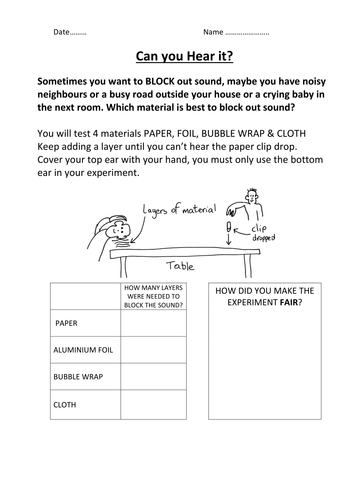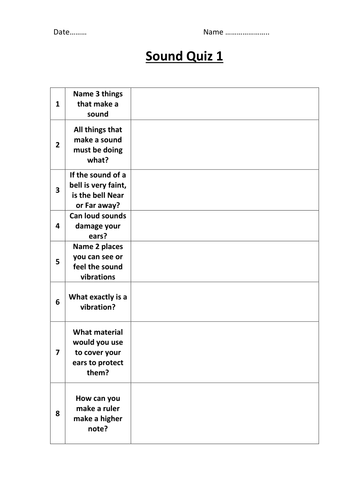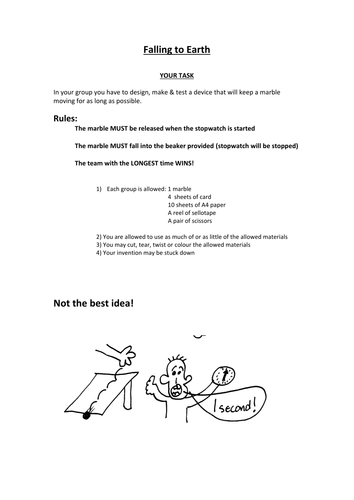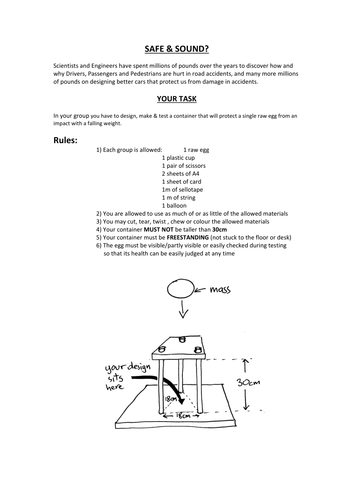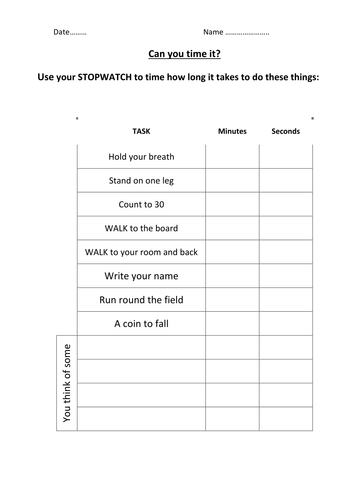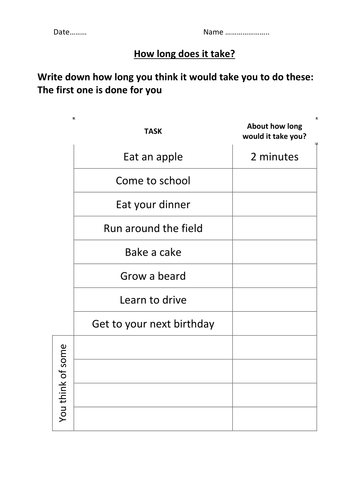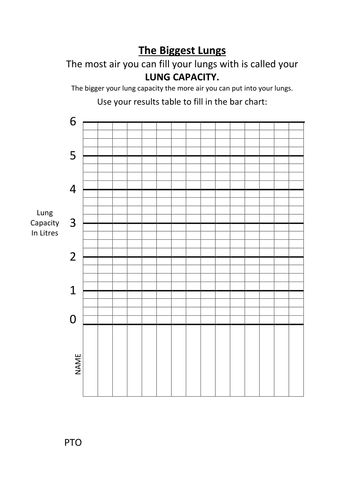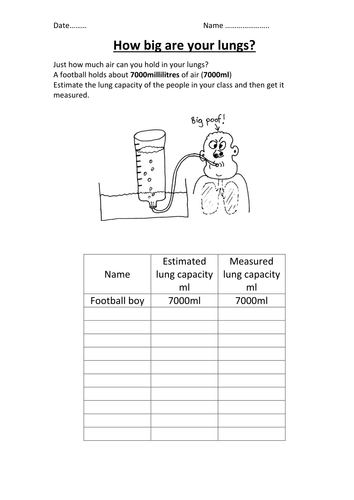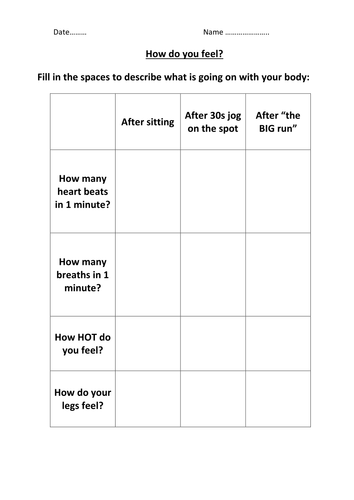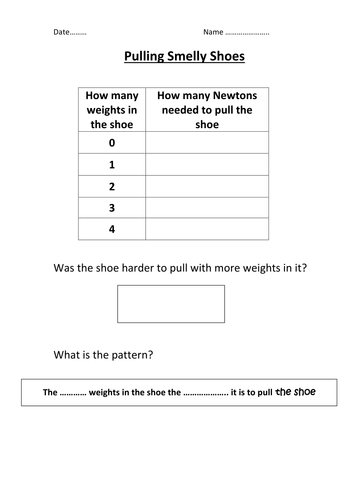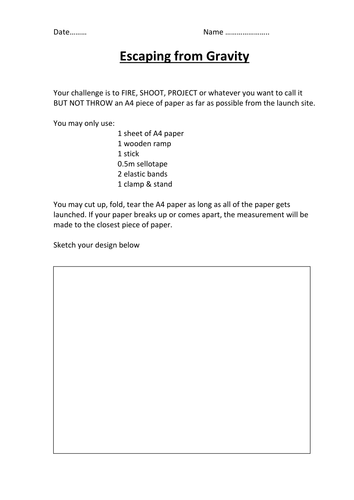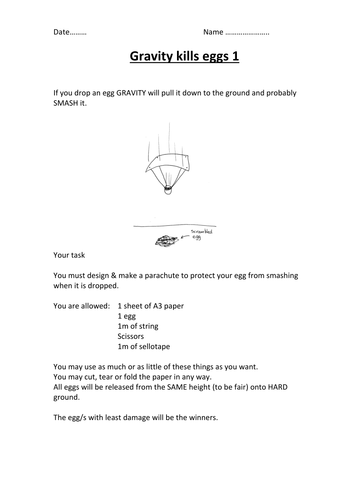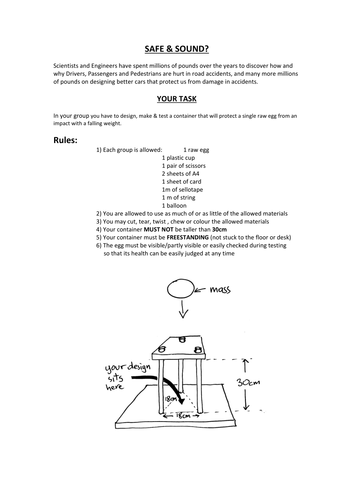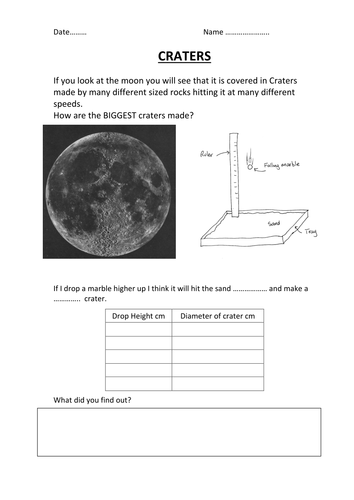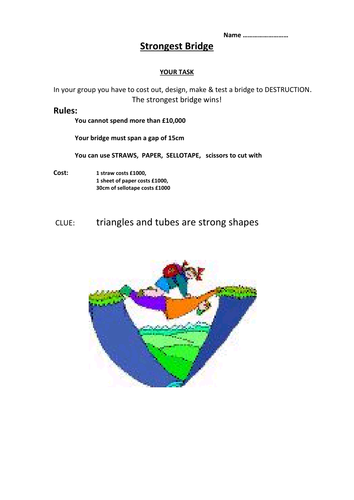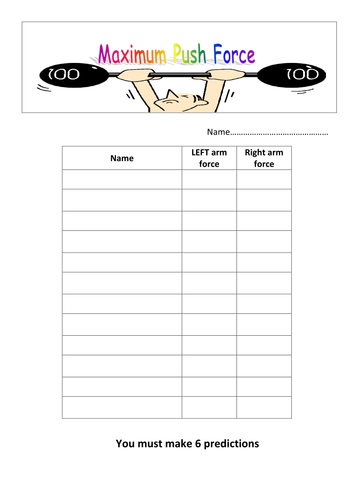
69Uploads
16k+Views
511Downloads
All resources

Can you hear it?
With limited resorces this gives students an opportunity to test out "sound proofing"
You just need a table, paper clip, ruler and a selection of materials that may be useful in blocking out the noise from a noisy neighbour
Give the students as much guidance as you like or alternatively, as I prefer, just give them the limited resorces and tell them to devise a "fair" test.
Potential for discussion, competition and looking silly walking around with ear protectors made out of the winning material

Sound quiz
A nice sound quiz which gets more difficult as you go along.
A good way to introduce a sound topic, generate discussion and assess how much the students know

Marble challenge
Students are give some material resources to keep a single marble "moving" before it finally drops into a beaker (plastic)
The challenge is to keep it moving the LONGEST.
With such simple resources and some stop watches the students spend as long as needed to design, test and finally submit an entry for the challenge.Over the years I have seen most students go for the SIMPLE DILUTED GRAVITY technique..lots of long ramps end to end..they do work well if lined up well and prove good physics ideas.
The best solution was wonderful....a set of cones (upsidedown Chines rice pickers hats) with a hole at the point..a marble is released in the top hat and spirals slowly into the middle, drops onto the edge of the next hat below and so on...yes still diluted gravity but elegantly more compact and easier to construct...of course the students will come up with ideas you have never dreamed of........

EGG SQUASH
This is one of my most succesful Investigations/puzzles/problem solving tasks I produced and used over many years
The main aim is to protect a raw egg. Specif materials are given to "teams" they can use them abuse them, cut, rip, chew or even ignore them, but for FAIRNESS every team has the SAME materials.
This encourages Independent work, team work, prblem solving. It works well with motion studies: air bags, crumple zones etc.
The egg with it's protection is placed (by the students) onto the platform...The tricky news..you need to build a simple platform out of 2 bits of wood and 3 dowel rods..pretty easy really, mine has lasted 20 years but shows it.
The creation is placed on the base, you gently lower the top wooden board on top (sandwich like) and begin to drop a mass (I used a 2kg mass) from higher & higher..until the egg is "SQuashed" you must be able to see/feel the egg after each drop.
Over the years I have had spectacular successes & failures...lots of news paper on floor is useful.
Best ever result a 2kg drop from over 2.5m and the egg survived!..the crumple zone produced was superb.
Ideas the students had..air bag (balloon above egg/ below egg, egg INSIDE balloon and pumped up...great fun!
tubes made from paper/card, padding from ,aterials, hammocks using string etc etc
I spent the first lesson or 2 letting the students just make anything..next lesson...TESTED one by one infront of the class..then if you wish discuss the "Winner" & why?...then repeat expt if you wish for the next couple of lessons.
Before hand I usually did the "squash the egg with yiour hand" (in a clear plastic bag) yes I know you know they are strong but have you actually got the students to do it? got other staff..big bloke staff..crying because they can't...NO rings or fingernails just grip...then after they have tried and failed just drop iton the table to prove it is an egg!

Timing challenge
Simple timing tasks using a stopwatch.
Everyday activities are timed to see how long they take and to see how close the student's previous estimates were.

How long does it take?
Simple activities to get students thinking abot time intervals and what they mean.
Everyday activities are thought about and estimates of time recorded on the worksheet

The biggest lungs
This is the bar chart that students end up with after having completed the excercise and lung capacity activity.
It can lead nicely on from the "balloon" bar chart (if you chose to use it) for younger/less able students...or even more able but a "twist" on bar charts (see how big are your lungs)

How big are your lungs
A measuring lung capacity activity, staff lead.
You will need a large plastic bottle, I used a 5litre (windsreen wash topup bottle-empty and washed, and for smaller children a 2 litre coke bottle), mark the volumes with permanent pen on the outside of the bottle (add 100ml of water at a time to see where the marks should go. Have a steriliser solution in a beaker(baby bottle tablet types are great, as well as a rinse beaker to clean the mouth part of the pipe each time.
In one big breath students blow into the upturned bottle and their lung volume is recorded.
For younger students you can give each student an identical balloon (care with latex allergies) and get them to blow in one breath, tie up and stick "same size" balloons on board like a bar graph but made from balloons. Different colours look great. Visualy you see a bar graph on the wall made from balloons with the most common lung capacity having the tallest column of balloons.....then you can work on "real" bar charts

How do you feel after excercise?
Getting students to think about any changes to their body due to excercise.
This involves 3 levels of excercise (more if you wish) after which the students need to measure/monitor changes in their body.
This leads onto the 2 more activies/worksheets about lung capacity

FORCES powerpoint
Simple visual introduction to FORCES should generate discussion and relevance to student's lives.
All slides have lovely movements and funny stuff

TUG of war
Moving on from arm wrestling the students measure their max pulling force.
I usually hold one end of the ergometer and the students pull (steadily) the other, the whole class is done...you can have great fun here.
(no snatching as it is not fair)
2 goes each and the best force is recorded.
You do need a tug of war rope, but it is worth it's weight in gold.
Students predict who will win and hopefully see it is not the number of people that counts but the total force
1 vs 1, 2 vs 1, in some cases if the totals are closely balanced 3 vs 1 and it WORKS
ultimately the students predict a well balanced war using the whole class (FORCES not number of people is key)
students can draw and cut out people write names and forces on them and a poster (with a long piece of string) can be produced to show the 2 teams

Shoes weight and friction
Students use there own shoe, yes can get smelly, and use a newtonmeter to pull along a table, as the shoe is steadily moving the force being used is recorded. The experiment is repeated but with 100g mass (1N weight) is put into the shoe and so on with more weights
Studnts should spot the pattern of larger forces needed with heavier weights. This goes some way in explaining why big kids seem to have more grip

Projectiles to get places
Using only a sheet of A4 the students are challenged to do something to it to make it travel as far as possible, no throwing, just simply let go see how far.
You might think that some sort of wings are in order use the elastic bands somehow if they want

Protecting eggs, no parachute allowed
Moving on from parachuting eggs this activity gets students to accept it will hit hard so must be protected another way

Parachuting eggs
A simple activity which gets students thinking about how things fall and how they can be protected when they hit the floor

EGG SQUASH challenge
I use this often with many groups.
The challenge is to protect their raw egg by only using specific materials and amounts (FAIRLY all groups are given exactly the same materials) how much they use is up to them, they can cut, bend etc what they want
You must make a wooden jig, simple 2 bits of wood and 3 lengths of dowling, mine has lasted me 20 years so far and does not smell of eggs at all as it is washed everytime
The best result I have ever had was a tube(crum,ple zone and balloon (airbag) affair which protected the egg from a 2kg mass dropped on it from over 2m height

CRATERS
A set of experiments designed to get students thinking about possible VARIABLES that may make craters bigger or smaller. This can lead to a full investigation once the student has chosen a "good" (more controlable variable)

Build a bridge challenge
A simple challenge where students in small groups or on their own must decide which materials and much of them they should "buy" to build a bridge that must span a 15cm gap(between 2 chairs or boxes)
They are allowed a budget and must not spend more than allowed so must choose wisely.
The bride is tested to destruction by hanging masses (100g at a time) until the bridge fails

Arm wrestle better predictions
This sheet allows for the whole group to be measured one by one with an ergometer, have fun measuring each student's push force(much like a bullworker) for both arms. ie student holds one end of ergometer(large newton meter)in one hand close to waist while the other arm pushes the other end down from above. You can give the class 2 attempts as they watch their peers with better techniques get bigger FORCES and record the higher one
Then the fun starts picking arm wrestle competitions, some silly and easily predicted others beautifully balanced

Arm wrestle predictions
By simply looking at each other the students can "guess" who would win an arm wrestle.
Simply looking gives them a little EVIDENCE so they are actually predicting NOT just guessing.
BUT just looking is not good enough for dependable predictions so this worksheet is used again but after the PUSH force of every student is measured first using an ERGOMETER (very large newtonmeter)
students can then match a small force against a very large one , can be fun, even more fun is when closely balanced forces DO generally take ages and it is the cheering of the rest that decides the winner
This sheet allows for some surprises as you will discover the small, weaker students actually beat some bigger students because of training, clubs, etc

